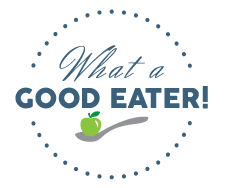Salt in Baby Food: How to Use it, and What You Need to Know

Sometimes an action can seem insignificant, but when done many times, it can add up to great change.
One example of this is the use of herbs and spices in food. We shared last week what we found from working with Naturopathic Doctor Stephanie Mottola, which was how herbs and spices provide micronutrients to our diets and how even more benefits are being discovered daily. This is especially good for when feeding our little ones, because we need to squeeze in nutrients wherever we can.
Another example of this is salt in baby food. Often the question is, when can my baby have salt? Or, how much salt is OK to use? Most pediatricians recommend waiting until your baby is 12 months plus before introducing salt to their diet.
But the question should also be: what kind of salt should we use?
We learned recently how the type of salt we use matters to our diets and overall health. As it turns out, a key ingredient—iodine—is extremely important in a child’s diet, and not all salts contain iodine.
“I have seen some children get goiters here in the US when iodized salt was completely avoided and the families did not eat out much, and/or the child was in a growth spurt,” explains JuliSu DiMucci-Ward, registered dietitian, certified diabetes educator, and a specialist in pediatric nutrition. “When salt is used after 12 months, I recommend iodized in most cases because the soil in the US is poor in iodine. Not many individuals get enough iodine from shellfish, fish, or seaweed here in the United States.”
Once we learned this, we couldn’t believe just how many salts did not contain this important nutrient.
Don’t worry – we aren’t about to tell you that you need to go hunt down some expensive sea salt scraped from obscure bodies of water across the globe. You’ll be happy to know that you can find iodized salt in your nearest health food store, as well as on Amazon.
While iodine is important for everyone, it’s especially important for those who are vegetarian as well as those who do not (or cannot) eat shellfish. It’s likely that your toddler fits into this category as well, because let’s face it: most toddlers are not regularly chowing down on seafood!
Yet another example of how small changes – like replacing your regular salt for iodized salt – can be significant over time. So the next time you go to purchase salt, make sure you purchase one that contains iodine. Every bit counts!
What small lifestyle changes have you made? Do you see an impact? Tell us!
- Zoodles with Ground Turkey and Sauce - July 15, 2018
- Which Foods to Purchase Organic and Why: What a Good Eater Podcast - July 3, 2018
- How to Handle Kids Obsessed with Sweets: What a Good Eater Podcast - June 27, 2018
- 3 Super Ingredients to Add to Your Smoothie - June 20, 2018
- 4 Ways to Entertain Your Kids While You Cook: What a Good Eater Podcast - June 12, 2018
- Non-Meat Protein Ideas for Kids - October 9, 2017
- Healing Constipation Naturally Through Diet - June 27, 2017
- Sample Schedule of Life with 2 Toddlers - June 15, 2017
- 5 Healthy Smoothie Options for Babies, Toddlers, and Families - March 20, 2017
- Keep Ingredients Fresh with Infinity Jars - February 23, 2017


+ There are no comments
Add yours